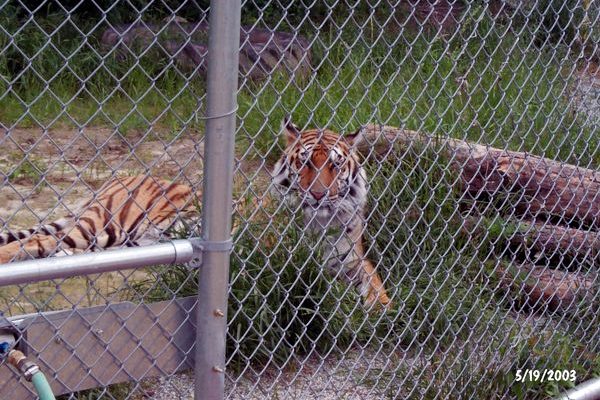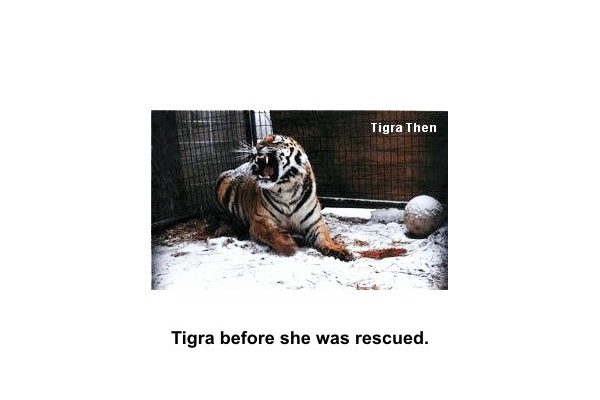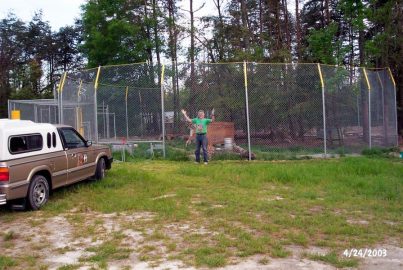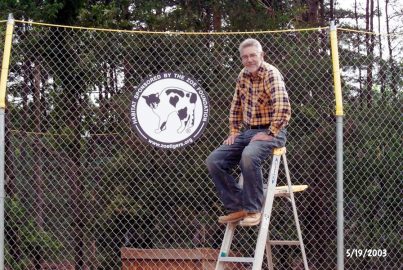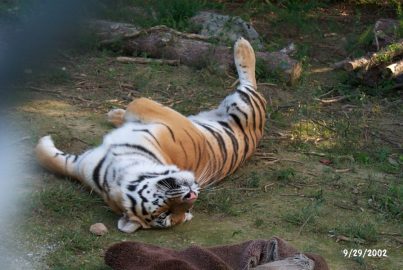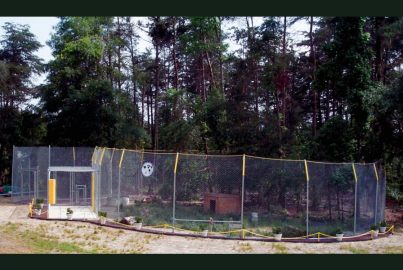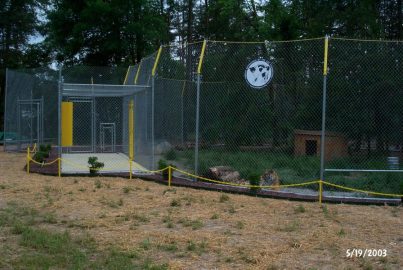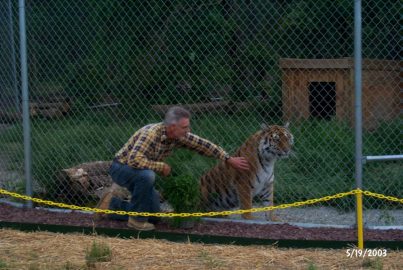Tigra
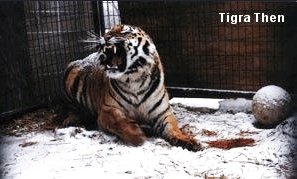 The Zoe Foundation designed and paid for Tigra’s new habitat. I designed a new self locking drop door, laid out the habitat and worked extensively on its construction and landscaping. The following is a synopsis about Tigra written by Mindy Stinner.
The Zoe Foundation designed and paid for Tigra’s new habitat. I designed a new self locking drop door, laid out the habitat and worked extensively on its construction and landscaping. The following is a synopsis about Tigra written by Mindy Stinner.
“Tigra began life as a performing cat in Hollywood. She was retired when she was about 18 months old, in part because of a broken canine tooth that made her less photogenic. Tigra was placed in a sanctuary that was undergoing a transition. The facility was being moved to a new site, and management difficulties had left the cats at the new facility under the responsibility of an inexperienced man who had presented himself as an animal handler and construction expert. He was not. The cages he built were small and poorly constructed, and he situated the cages on the top of a mountain rather than in the adjacent protected valley. When he had spent most of the funding, he left for another job taking trailers, caging, equipment and tools from the facility.
Tigra’s cage was was a 10′ by 10′ dog kennel pen with a cement floor. She did not have shelter or even a scratching log in the pen. Her cage was placed on top of a mountain, exposed to the winter weather. She did not have a tarp for shade or protection from the rain. Because she did not have any platforms or ways to get off the ground, her back leg muscles had atrophied. She was isolated, apart from the other cats and behind a building.
After an ice storm crippled the facility, I spent time volunteering there, helping to bring it into USDA compliance and helping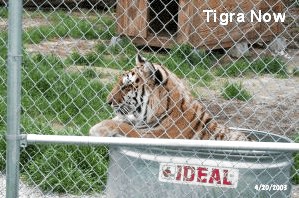 prepare additional cages for the cats waiting to be moved. Tigra demonstrated some extreme fears of objects and people, so I spent a great deal of time working to desensitize her through exposure. I tended her frostbitten feet and noticed an abscess under her chin from an infection she had hidden from her caretakers. When the facility owner realized I had bonded so well to this cat, she asked if I would consider bringing her home to CCI. With so much work still to be done transporting and caring for animals there, it would be difficult to spend the time caring for her daily after required surgery. I gratefully accepted her as an educational animal for CCI. After a trip to the veterinarian, she returned with me to NC as our newest resident.”
prepare additional cages for the cats waiting to be moved. Tigra demonstrated some extreme fears of objects and people, so I spent a great deal of time working to desensitize her through exposure. I tended her frostbitten feet and noticed an abscess under her chin from an infection she had hidden from her caretakers. When the facility owner realized I had bonded so well to this cat, she asked if I would consider bringing her home to CCI. With so much work still to be done transporting and caring for animals there, it would be difficult to spend the time caring for her daily after required surgery. I gratefully accepted her as an educational animal for CCI. After a trip to the veterinarian, she returned with me to NC as our newest resident.”
Tigra’s Habitat Construction
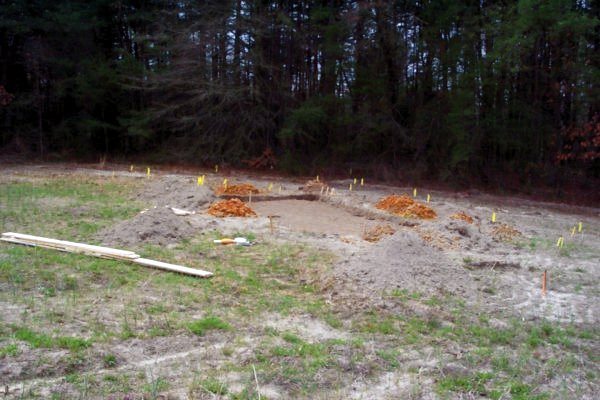 The layout for Tigra's cage has begun. The excavated area is for the 16' x 20' concrete pad that will be used as her feeding/shift area. Her habitat is circular and extends into the woods so she will have trees and shade. The form boards are in the foreground.
The layout for Tigra's cage has begun. The excavated area is for the 16' x 20' concrete pad that will be used as her feeding/shift area. Her habitat is circular and extends into the woods so she will have trees and shade. The form boards are in the foreground.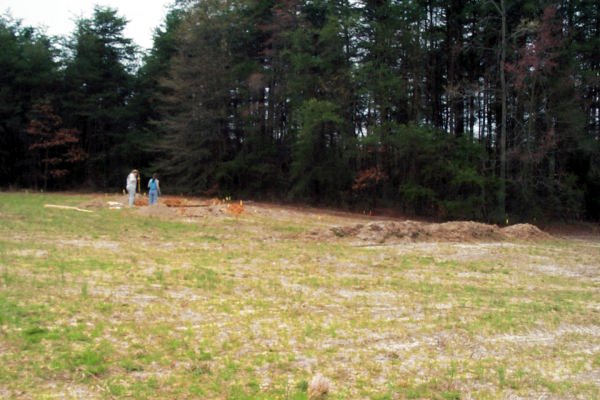 The layout for Tigra's cage has begun. Mindy and Mandy are doing some digging.
The layout for Tigra's cage has begun. Mindy and Mandy are doing some digging.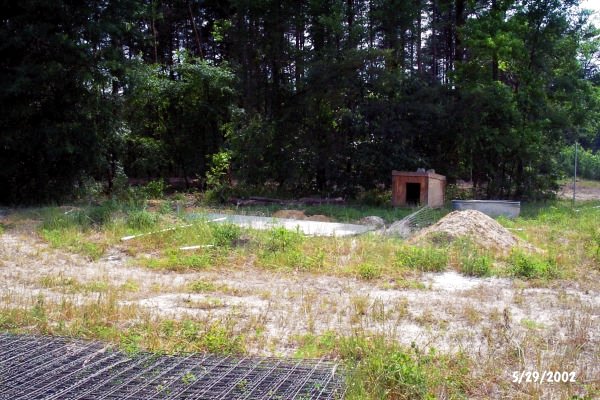 After the pad was poured Tigra's den box and temporary pool were placed inside the habitat's perimeter.
After the pad was poured Tigra's den box and temporary pool were placed inside the habitat's perimeter.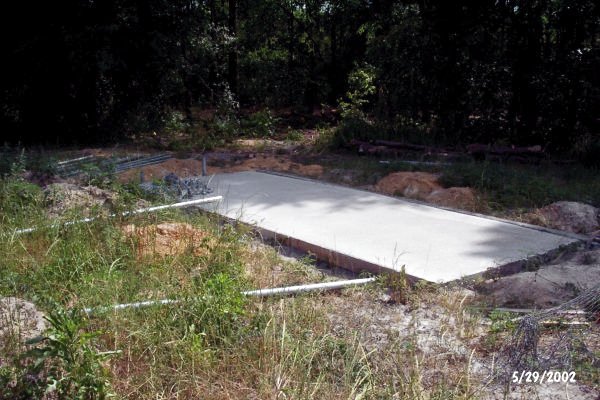 This is a close up of the slab with the forms still in place. We will be coating the concrete with an epoxy. I will broadcast kiln dried sand over the final coat to make a non-skid surface.
This is a close up of the slab with the forms still in place. We will be coating the concrete with an epoxy. I will broadcast kiln dried sand over the final coat to make a non-skid surface.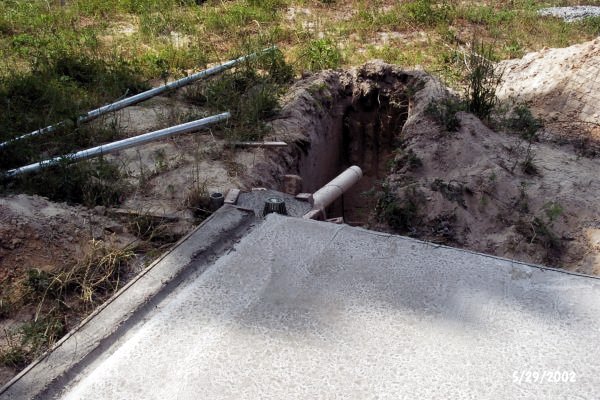 This shows the rough in for the French drain. I have quite a bit of work to do on the drain box.
This shows the rough in for the French drain. I have quite a bit of work to do on the drain box.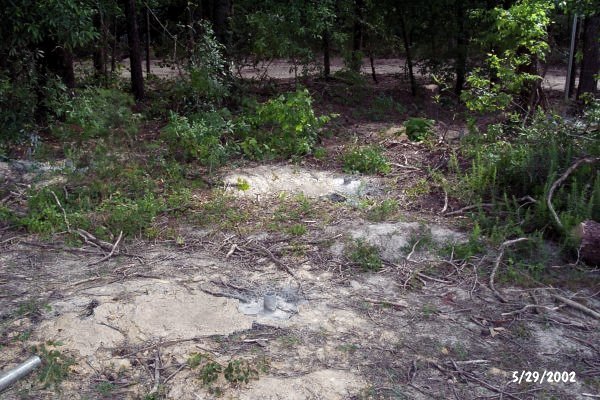 These are the 3 inch schedule 40 galvanized sleeves that will house the 2.5 inch schedule 40 galvanized poles that we use for the wall. By using sleeves we will be able to replace parts or totally dismantle the habitat if necessary.
These are the 3 inch schedule 40 galvanized sleeves that will house the 2.5 inch schedule 40 galvanized poles that we use for the wall. By using sleeves we will be able to replace parts or totally dismantle the habitat if necessary.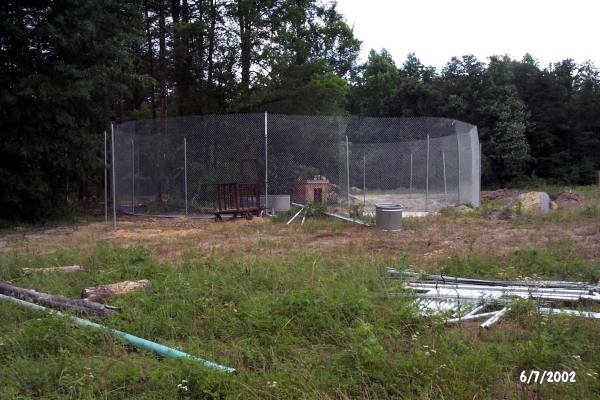 The side wall of the habitat are in place. This is temporary. We will go back and plumb some of the uprights. The extension tube you see in the center is 3 feet long and angled to 15 degrees. They will be powder coated safety yellow. We wanted to get Tigra out of her small holding cage and into the new area, so we will shift her into the roll cage when specific work needs to be done.
The side wall of the habitat are in place. This is temporary. We will go back and plumb some of the uprights. The extension tube you see in the center is 3 feet long and angled to 15 degrees. They will be powder coated safety yellow. We wanted to get Tigra out of her small holding cage and into the new area, so we will shift her into the roll cage when specific work needs to be done.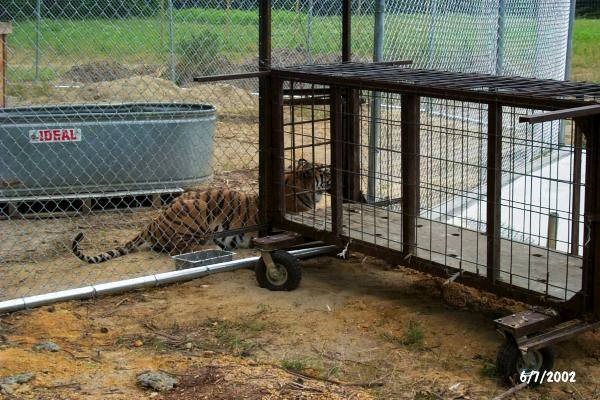 Here's Tigra sitting beside her temporary pool. The roll cage is temporary and used to shift her when work is being done. We plan to build her a nice pool after the main and shift areas are completed. She has a water station that has an automatic filler.
Here's Tigra sitting beside her temporary pool. The roll cage is temporary and used to shift her when work is being done. We plan to build her a nice pool after the main and shift areas are completed. She has a water station that has an automatic filler.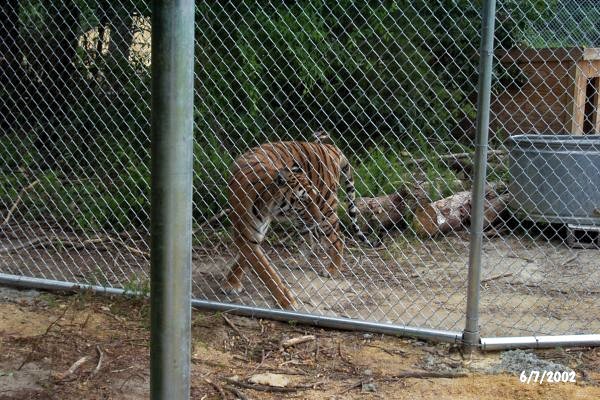 Click the image to shrink it. Tigra's on the move. The bottom rails are wired in temporarily until we can affix the rail ends.
Click the image to shrink it. Tigra's on the move. The bottom rails are wired in temporarily until we can affix the rail ends.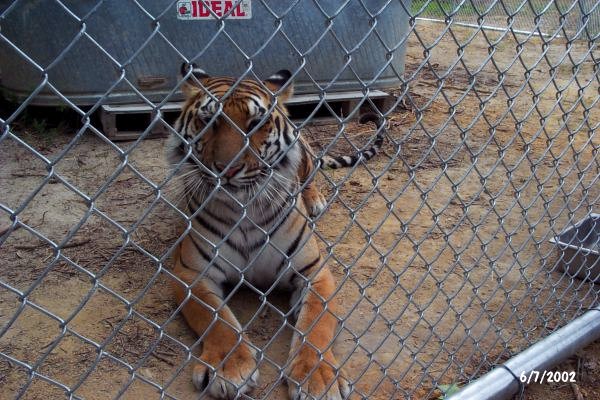 Tigra's a happy cat. When the construction is complete we will house her in the shift area for a few days while we till the ground and plant a sturdy grass mixture.
Tigra's a happy cat. When the construction is complete we will house her in the shift area for a few days while we till the ground and plant a sturdy grass mixture.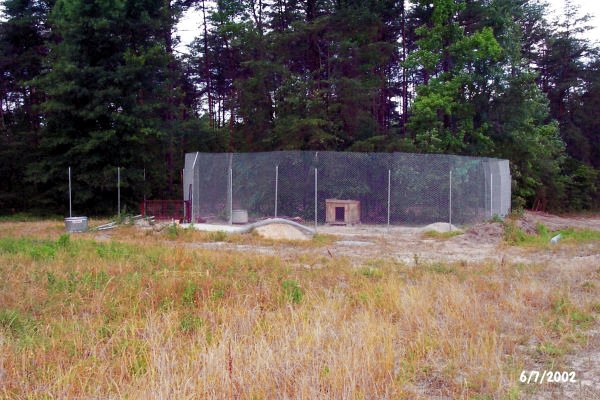 More poles are up for the safety area on the left. At left is the galvanized stock trough we use with the automatic water fill. It's now in the habitat area.
More poles are up for the safety area on the left. At left is the galvanized stock trough we use with the automatic water fill. It's now in the habitat area.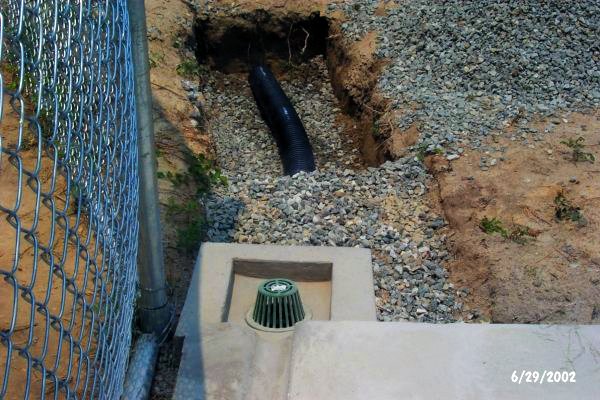 You can see I've done a lot of work to the drain box and French drain. This photo shows detail of the perforated field pipe sitting on a 3' deep bed of gravel. After each feeding the shift area will be washed. I graded the slab at a 1 inch fall over 10' in both directions so the run off would move to the drain box. The shift area is 16' x 20'.
You can see I've done a lot of work to the drain box and French drain. This photo shows detail of the perforated field pipe sitting on a 3' deep bed of gravel. After each feeding the shift area will be washed. I graded the slab at a 1 inch fall over 10' in both directions so the run off would move to the drain box. The shift area is 16' x 20'.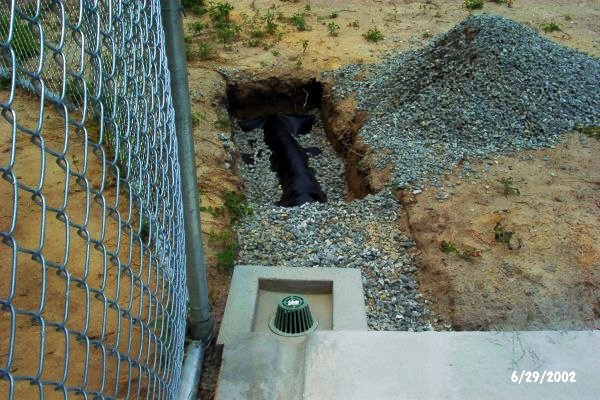 Filter cloth covers the field pipe before filling with remaining gravel.
Filter cloth covers the field pipe before filling with remaining gravel.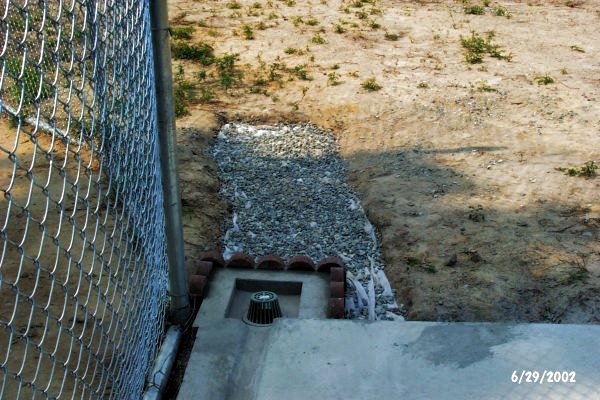 Weed control cloth is placed 3 inches below grade. It is held in place with a light gravel cover. Dirt will be placed and the entire area seeded. You can see that I've dressed up the drain box a little more.
Weed control cloth is placed 3 inches below grade. It is held in place with a light gravel cover. Dirt will be placed and the entire area seeded. You can see that I've dressed up the drain box a little more.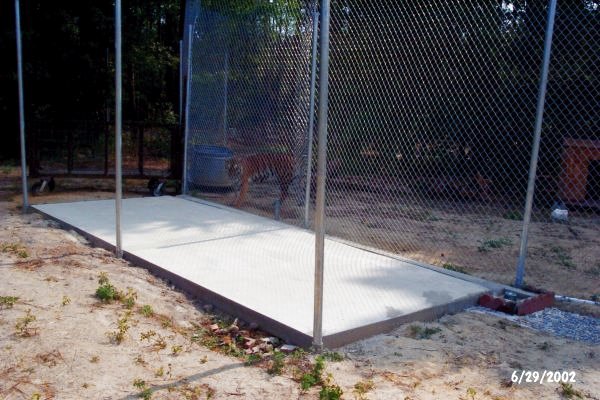 The forms have been removed and the poles set for the shift area. Tigra's impressed!
The forms have been removed and the poles set for the shift area. Tigra's impressed!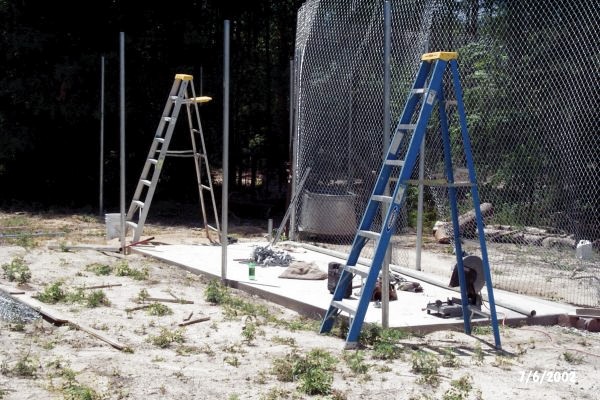 We are beginning on the shift change. This is the area where Tigra will get her food. She will be locked down in this area during habitat cleaning. This area has a concrete floor for easier cleaning.
We are beginning on the shift change. This is the area where Tigra will get her food. She will be locked down in this area during habitat cleaning. This area has a concrete floor for easier cleaning.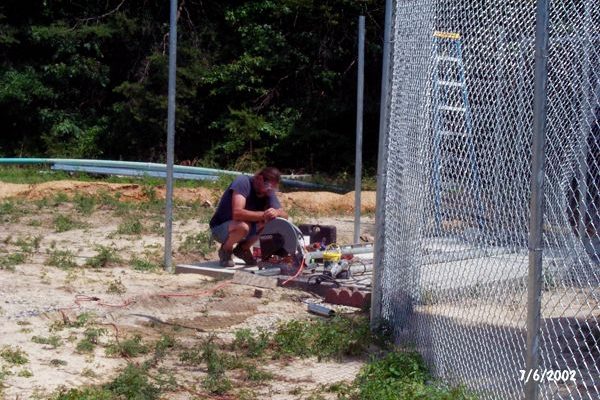 Doug is cutting some of our schedule 40 pipe.
Doug is cutting some of our schedule 40 pipe.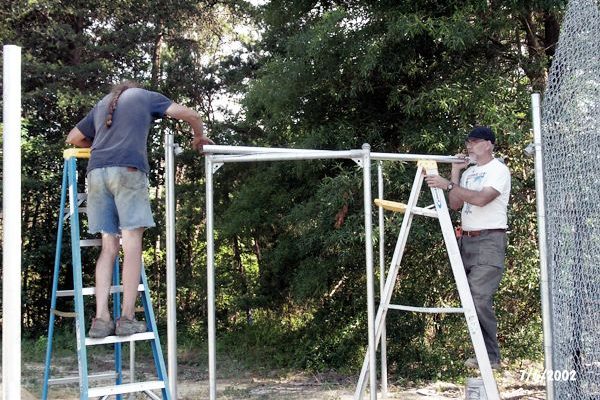 Doug and I are installing one of the top rails.
Doug and I are installing one of the top rails.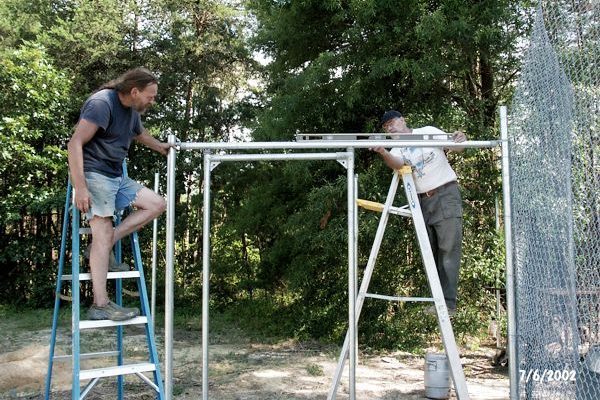 Leveling the top rail.
Leveling the top rail.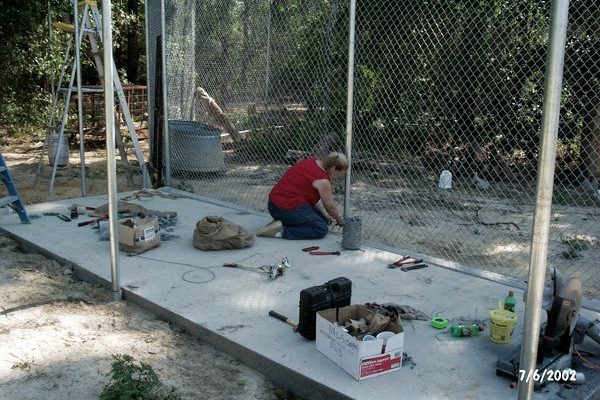 Mindy is attaching the fence to the schedule 40 galvanized pipe.
Mindy is attaching the fence to the schedule 40 galvanized pipe.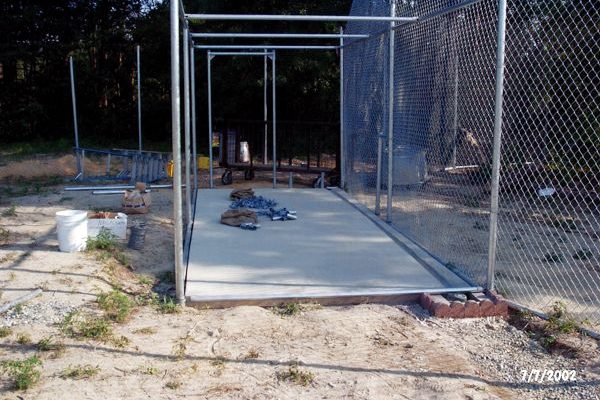 The shift cage is coming along.
The shift cage is coming along.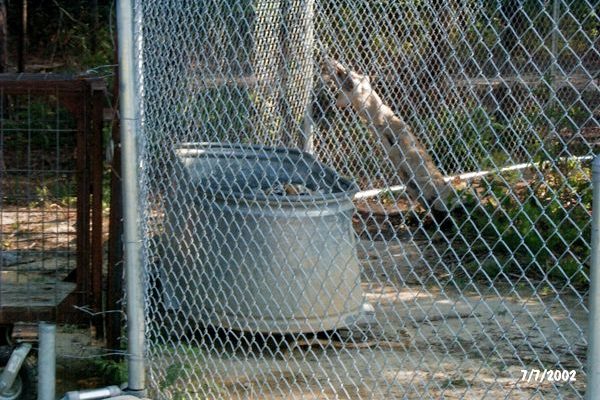 Tigra is hiding in her tub.
Tigra is hiding in her tub.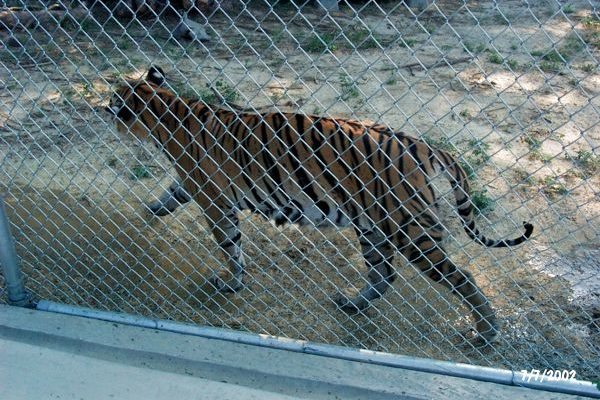 Tigra is making her rounds.
Tigra is making her rounds.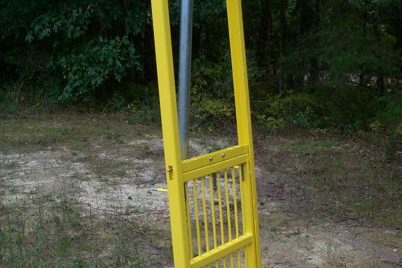 Automatically locking drop door I designed.
Automatically locking drop door I designed.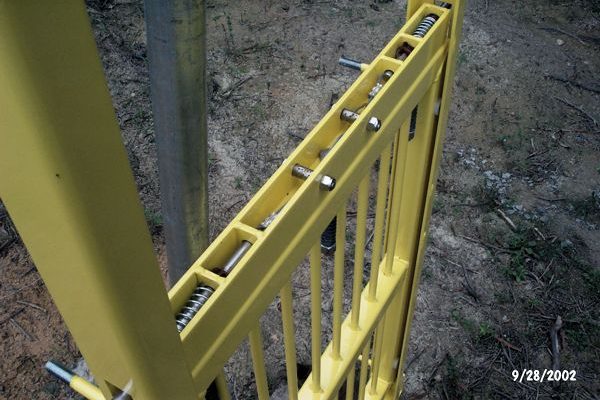 Door mechanism.
Door mechanism.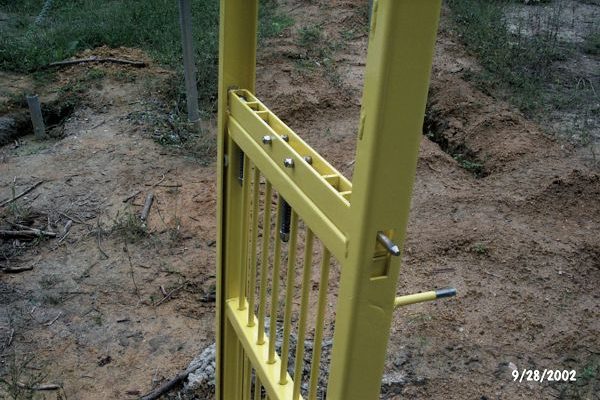 Drop door.
Drop door.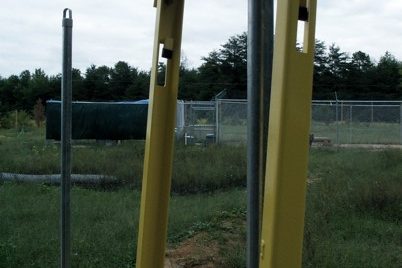 Drop door.
Drop door.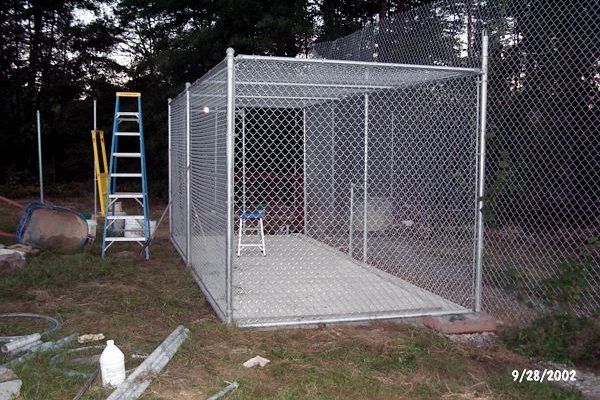 The shift cage fencing is in place.
The shift cage fencing is in place.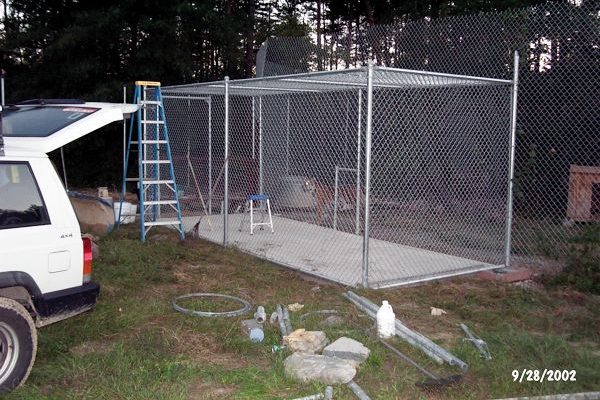 Another angle.
Another angle.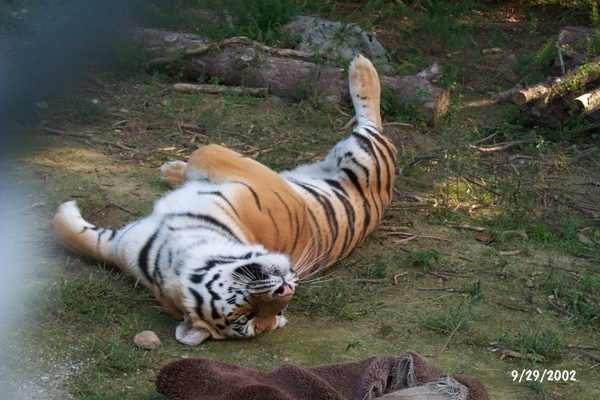 Tigra is relaxing!
Tigra is relaxing!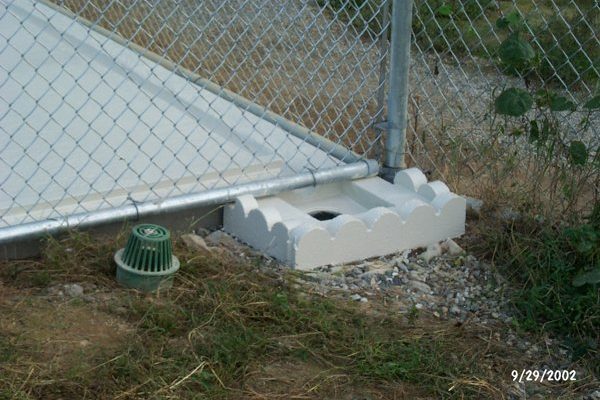 Close up of completed French Drain.
Close up of completed French Drain.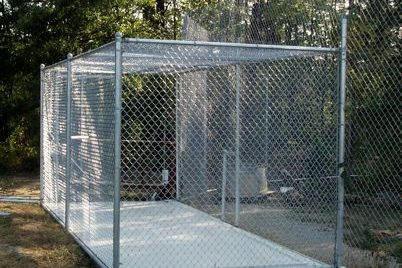 Shift cage.
Shift cage.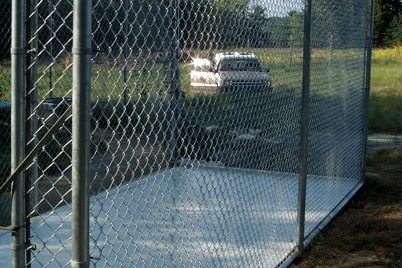 Shift cage.
Shift cage.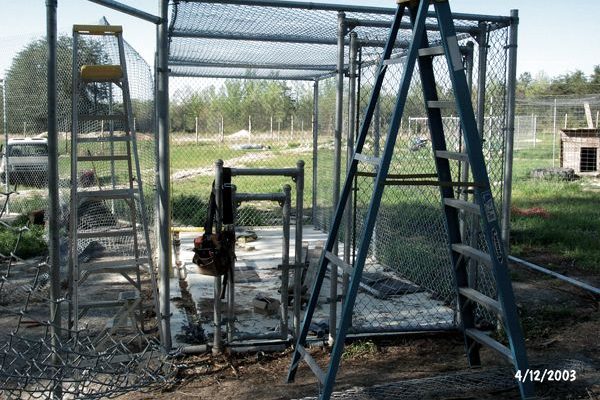 There are two doors on this end of the shift. The large one is the entrance. The small one is used for the roll cage. It is sized to fit the roll cage's opening.
There are two doors on this end of the shift. The large one is the entrance. The small one is used for the roll cage. It is sized to fit the roll cage's opening.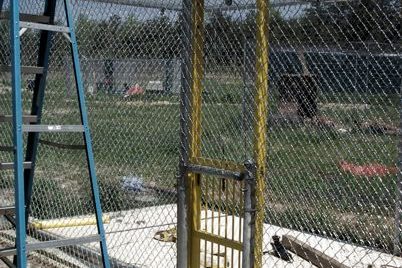 Drop door installation.
Drop door installation.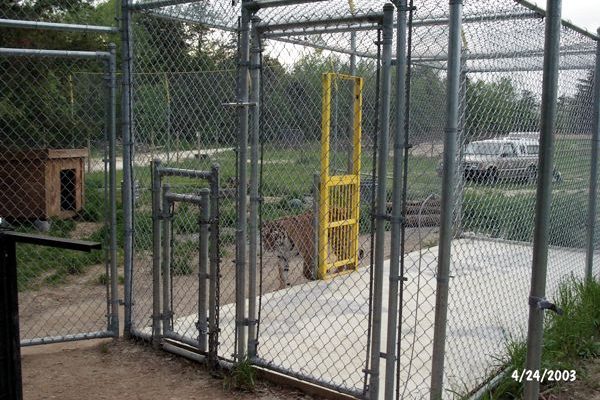 The doors are in place.
The doors are in place.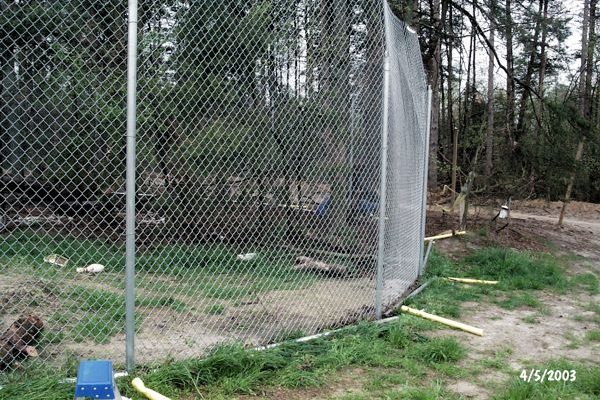 The bottom rails are ready to be attached to the upright pipes. The fence will then be attached.
The bottom rails are ready to be attached to the upright pipes. The fence will then be attached.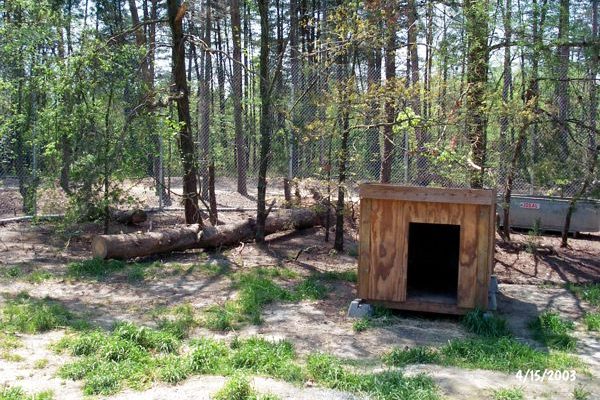 Tigra's den box. She will get larger quarters later.
Tigra's den box. She will get larger quarters later.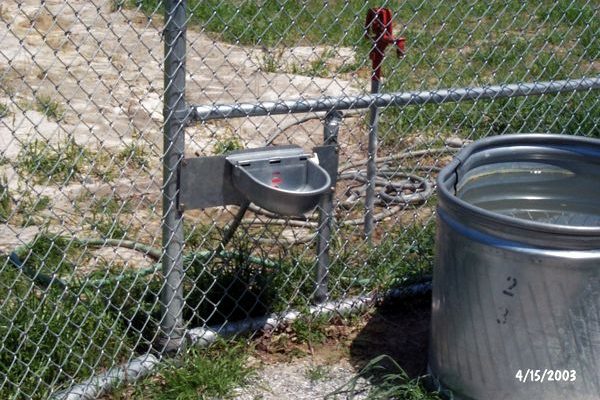 This is a self filling, stainless steel water station.
This is a self filling, stainless steel water station.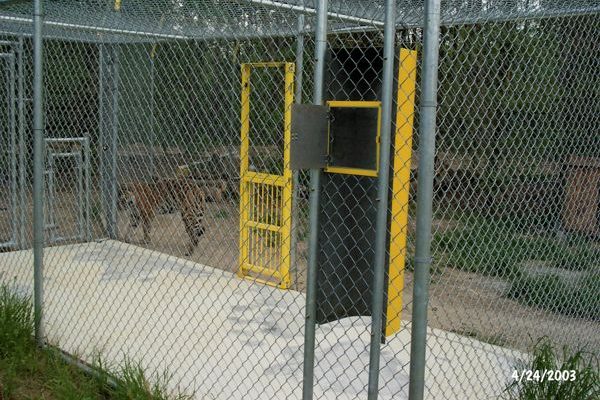 The feeding chute. Food is dropped in through the small door.
The feeding chute. Food is dropped in through the small door.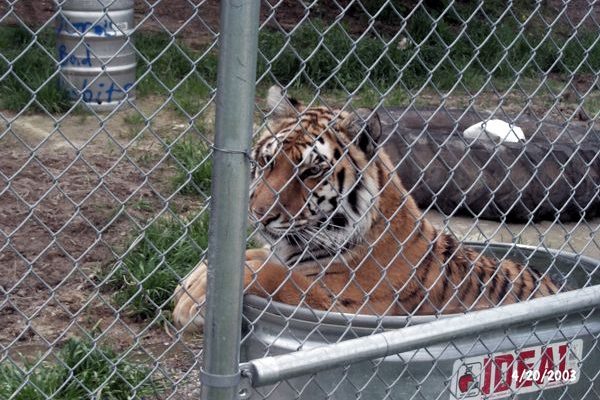 Tigra is relaxing in her tub.
Tigra is relaxing in her tub.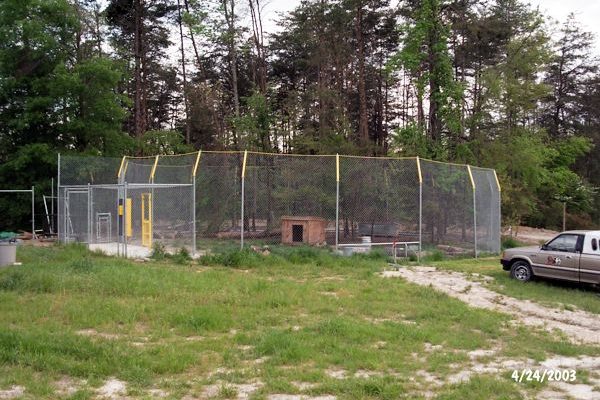 The habitat is beginning to take shape.
The habitat is beginning to take shape.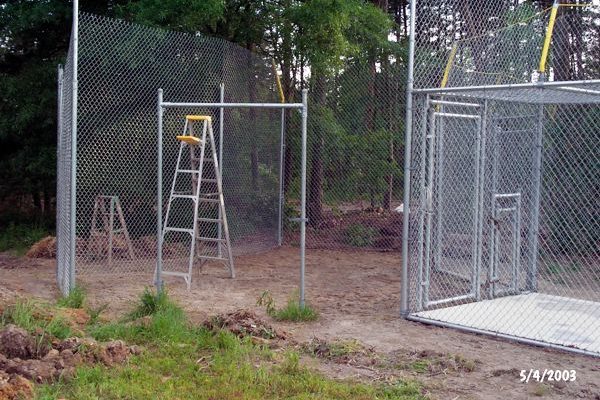 We are now constructing the safety area. One enters the safety area and closes the door before opening the main habitat's door or the shift cage door. This habitat design has another identical cage set going on the left side. The safety area is between the two.
We are now constructing the safety area. One enters the safety area and closes the door before opening the main habitat's door or the shift cage door. This habitat design has another identical cage set going on the left side. The safety area is between the two.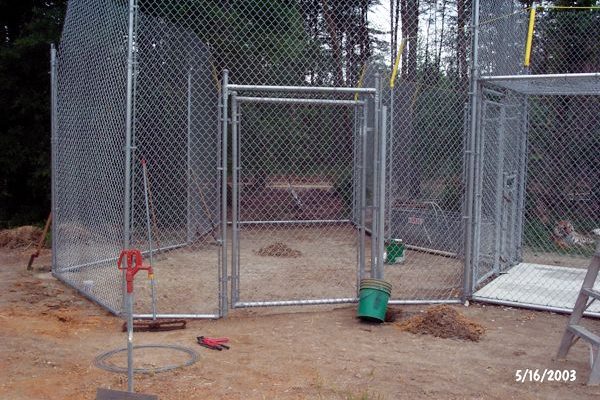 The safety area is coming along.
The safety area is coming along.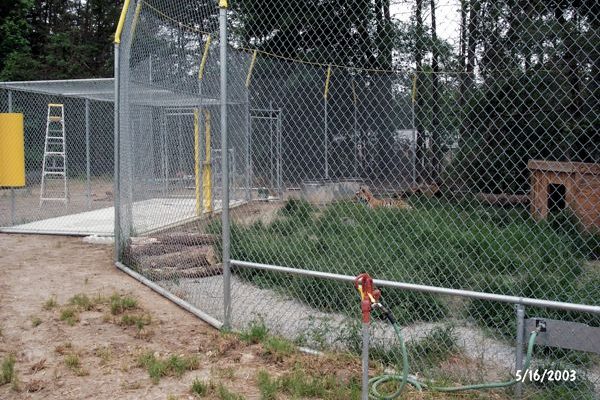 The water line is in place and connected to the water station.
The water line is in place and connected to the water station.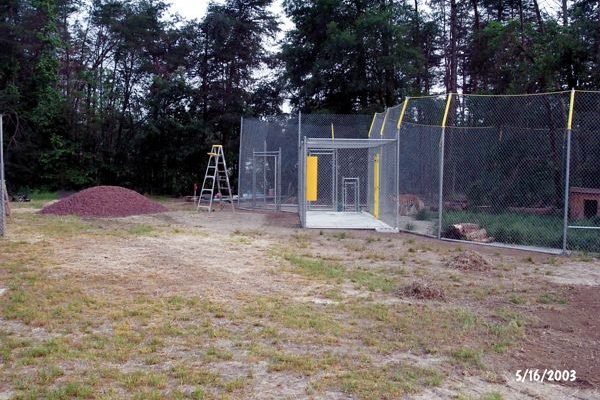 At the left you can see the red rock I am using for landscaping.
At the left you can see the red rock I am using for landscaping.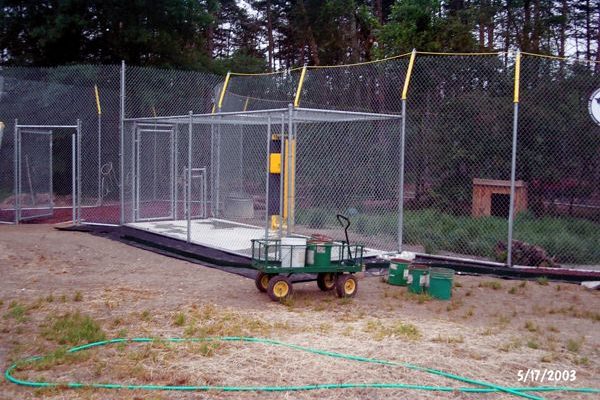 Black filter cloth will be put down and the rocks spread on top.
Black filter cloth will be put down and the rocks spread on top.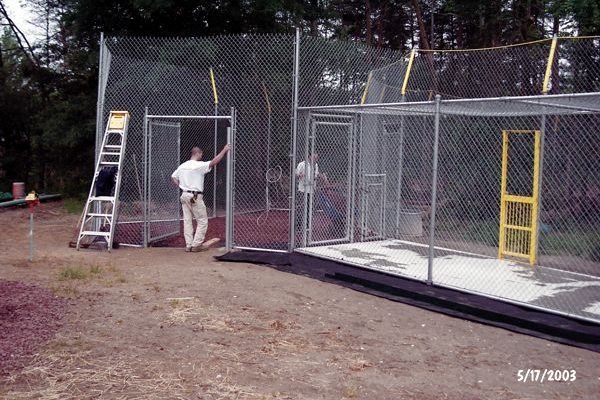 The rock is being placed in the safety area. Black filter cloth has been placed around the perimeter of the habitat.
The rock is being placed in the safety area. Black filter cloth has been placed around the perimeter of the habitat.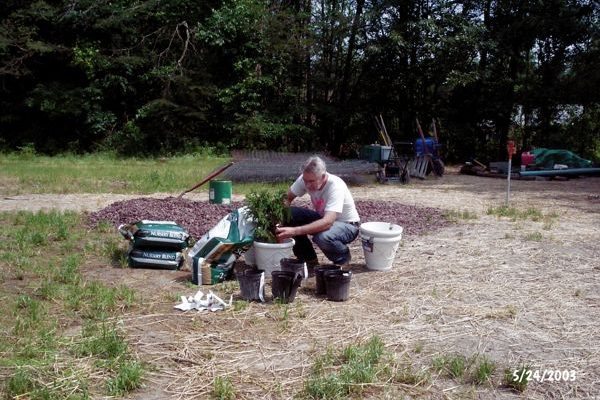 I am potting some plants to be placed around the habitat.
I am potting some plants to be placed around the habitat.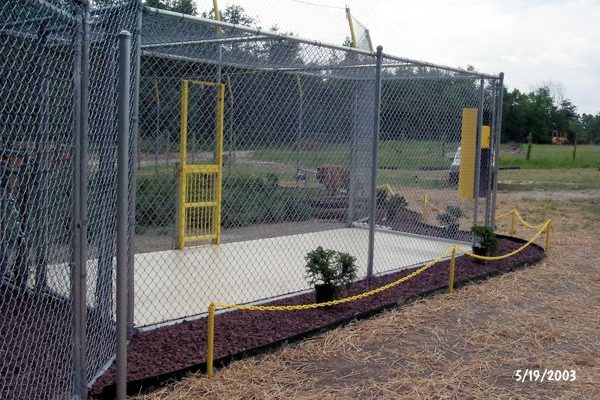 Completed landscaping.
Completed landscaping.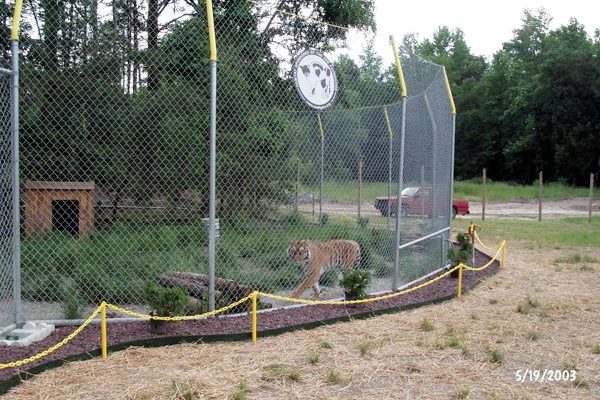 Tigra is checking out the landscaping.
Tigra is checking out the landscaping.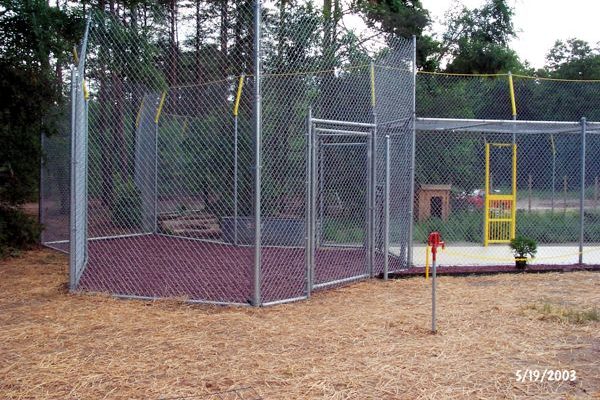 Completed landscaping.
Completed landscaping.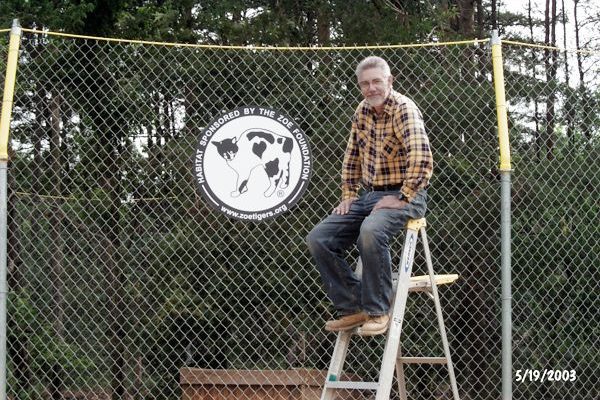 I have just attached the Zoe Foundation sign to Tigra's habitat.
I have just attached the Zoe Foundation sign to Tigra's habitat.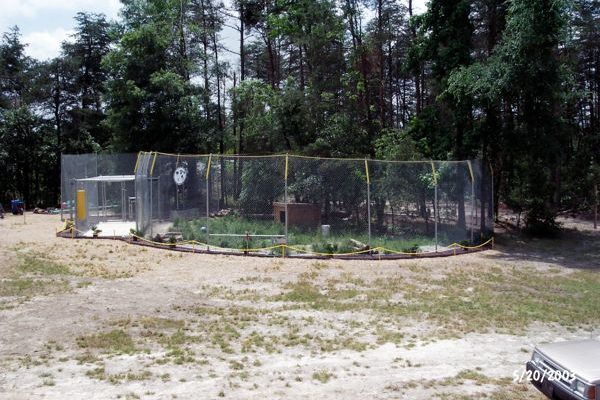 A view from a distance.
A view from a distance.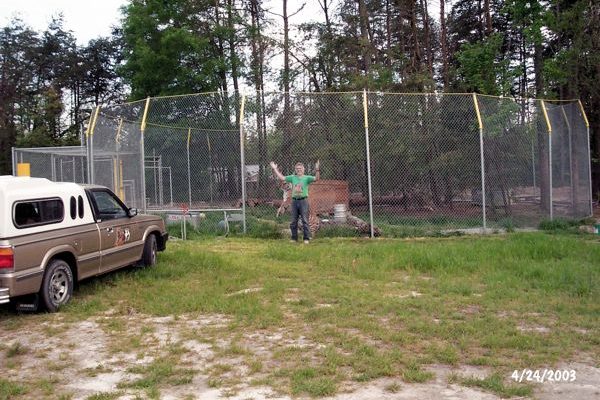 Tigra and I are both happy.
Tigra and I are both happy.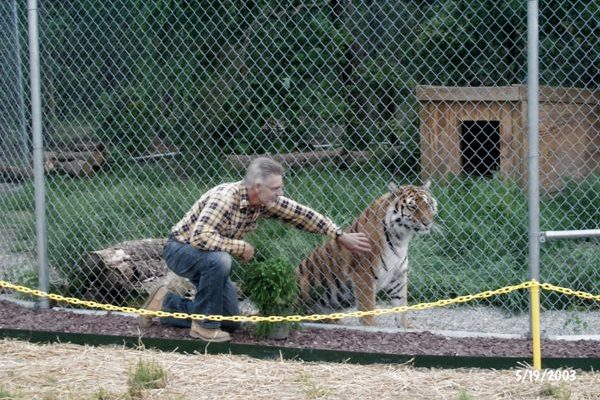 Tigra and me.
Tigra and me. Tigra and me.
Tigra and me.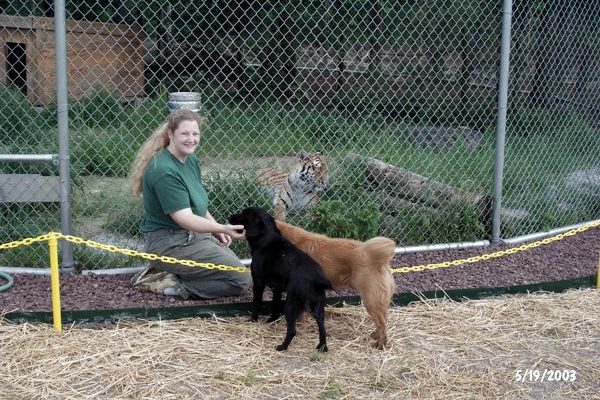 Tigra, Mindy, the director of CCI, and her dogs.
Tigra, Mindy, the director of CCI, and her dogs.